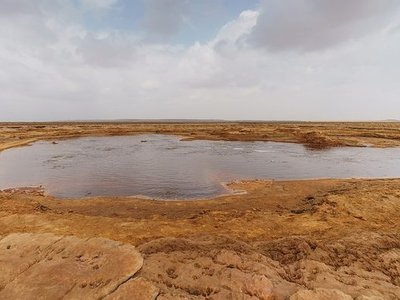Gaet’ale Pond


Gaet’ale Pond is the saltiest
naturally-occurring body of water on Earth. It also belches out toxic gas that kills small birds, insects and, potentially, humans.
The Afar Depression in northern
Ethiopia
is one of the most tectonically active regions in the world. Shaped by volcanic activity, the floor of the depression is largely composed of lava, and the area is riddled with fascinating natural formations that bake in the scorching sun.
One such feature is Gaet’ale Pond, the largest of a series of small bodies of water a few miles from
Dallol
, one of the hottest inhabited locations on Earth. The roughly semi-circular lake has a diameter of about 197 feet. According to locals, it was formed after an earthquake in January 2005.
Despite its balmy 122-to-155-degree Fahrenheit temperature, Gaet’ale Pond is certainly not the place for a hot dip in the water. It often belches out toxic gases, as evidenced by the dead insects and birds often found near its shores, and researchers consider it a dangerous—and potentially lethal—health hazard for human visitors.
But what really sets Gaet’ale Pond apart is its salt content. Thanks to volcanic processes in the area, the pond has an incredibly high salinity of 43 percent (mainly calcium chloride and magnesium chloride), making it the saltiest body of water on Earth.
To put that into perspective, the water in Gaet’ale Pond is more than 12 times saltier than the water in the world’s oceans, which have a salinity of approximately 3.5 percent. The world’s most famous salty sea, the Dead Sea, has a salinity of 33.7 percent. And the world’s second saltiest body of water,
Don Juan Pond
in
Antarctica
, has a salinity of at least 33.8 percent.